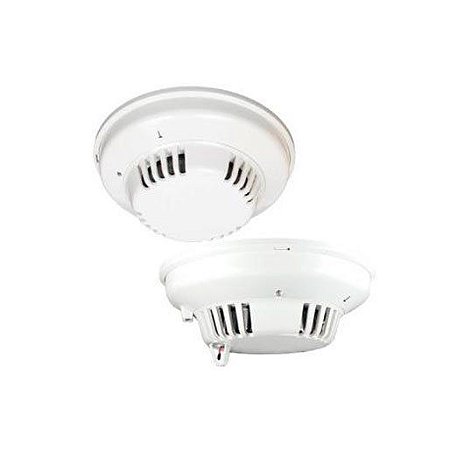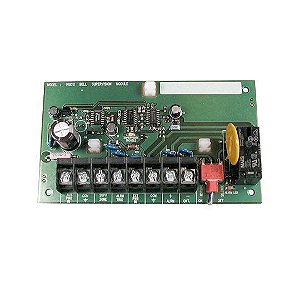D263 BOSCH
D263 BOSCH
D263 TWO-WIRE PHOTOELECTRIC SMOKE DETECTOR.
D263 Two‑Wire Smoke Detector Two‑wire photoelectric smoke detector
These detector models use an infrared (IR) LED light source and a silicon photodiode to measure light in a chamber. A fine screen covers the chamber to deter insects and to reduce dust accumulation and nuisance alarms.
D263 During a fire, smoke particles reflect light onto the photodiode. When the photodiode measurements exceed the alarm threshold, the detector signals an alarm condition. After the alarm condition clears, interrupt power at the control panel to reset the detector. Use a D132B Reversing Relay Module to activate the sounder (85 dB at 10 ft [3 m]). When using a D132B, the LED does not latch on alarm.
- 12 V or 24 V input
- Designed for commercial or residential use
- Two-wire application
- Light-emitting diodes (LEDs) indicate the status of the chamber, power, and alarm
- Removable terminal block to simplify wiring connections
D263 Chamber Calibration Tests
Check the sensitivity and calibration of any of these detectors using a visual check, a magnet test, or a voltage measurement test.
Visual check: When the detector’s calibration is within the factory listed range, the red alarm LED flashes once every 3.5 sec. If the detector’s calibration is out of range for more than 24 h, the red alarm LED flashes once a second.
Magnet test:
- Hold a magnet horizontally against the detector for about 10 sec and observe the LED.
- If the detector is within the factory-listed calibration range, it goes into alarm and the Alarm LED latches on.
- If the detector is too sensitive, the LED rapidly flashes six times (once every half second) and the detector signals an alarm.
- If the detector is not sensitive enough, the LED slowly flashes four times, once every 2 seconds, and the detector signals an alarm.
- If the detector does not operate, it does not signal an alarm. Voltage measurement test: Use a D1005 Test Cable and a digital voltmeter to measure the voltage and compare the results with the factory-listed sensitivity range.
Wiring
The terminal block accepts up to 12 AWG (ISO 4 mm2 ) wire. You can remove the terminal block from the detector for easier wiring. The terminal block snaps in and out of the detector.
Produtos relacionados
- ARTECHE
- AUTOMAÇÃO FINDER
- BALLUFF
- BANNER
- BENTLY
- BMH
- CISCO
- CITEX
- CRYDOM
- DIGIMESS
- DIXON VALVE
- DOLD
- EDWARDS SIGNALING
- ELÉTRICO
- ERICO
- ERRAZ SHAWMUT
- FERRAZ SHAWMUT
- FESTO
- GENÉRICO
- hanshin chain
- HIRSCHMANN
- KELTEC
- KEYENCE
- KST
- LYNX
- MOELLER
- MTE
- NMB-MAT
- NORD
- OUTROS
- PERKINS
- PRO-FACE
- PROSOFT
- Sanyo
- SCHALTBAU
- SICK
- SIEMENS
- STORM TRAPPER
- TELEMECANIQUE
- TELTONIKA
- TURCK
- VERSAMAX
- WAGO
- WEIDMULLER
- WERMA
- INOVA
- SHERBORNE SENSORS
- OMRON
- SCHNEIDER
- PHOENIX CONTACT
- GE
- WEG
- EATON
- STECK
- ABB
- PILZ
- AUTOMAÇÃO PEPPERL-FUCHS
- HYUNDAI ELECTRIC
- MARGIRIUS
- MURR ELEKTRONIK
- CONEXEL
- ELETROMEC
- HELUKABEL
- IFM
- HONEYWELL
- ALLEN BRADLEY
- FABRICANTES
A CMC é a solução inovadora que criamos para descomplicar a importação de produtos de automação industrial no mercado internacional. Com a CMC é fácil comprar online de maneira rápida, prática e segura!














